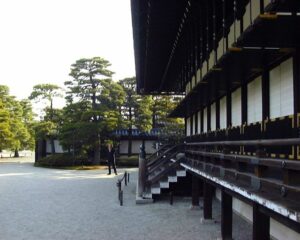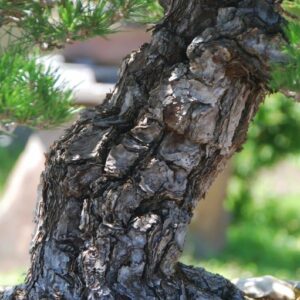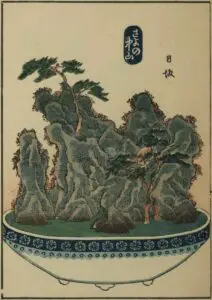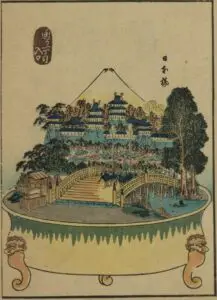With the evolution to a form of art, bonsai has been heavily influenced by Zen Buddhism to appreciate the simple and imperfect beauty of nature. We can feel and experience nature through bonsai and we see nature in it.
Is bonsai spiritual?
The Zen of Bonsai
Bonsai is not just about cultivating a tree in a pot. At the heart of the art of bonsai is a philosophy of Zen that values the acceptance of the present and a deep connection to nature.
Bonsai history: the beginning
Bonsai originated in China more than 2000 years ago.
From the beginning of the 7th through the 9th century, Japanese imperial missions are sent to China in an effort to learn about the Chinese civilization. Each missionary had his own objective: priests to learn Chinese Buddhism; officials to learn governance; painters to learn Chinese painting.
It is around this time that the idea of bonsai was first introduced to Japan.
Bonsai and Zen Buddhism
How bonsai and zen are connected
During the 12th to 13th centuries, Japanese monks continued to visit China to learn Buddhism, in particular Zen Buddhism which was then flourishing under the Chinese Song Dynasty.
With the Dynasty’s downfall in the 13th century, many Chinese Zen Buddhist monks fled to Japan and brought Chinese philosophy, art, and customs with them, which included the appreciation of artistically formed plants and landscapes in miniature: bonsai.
Zen influence on bonsai
As Zen monks had constant opportunities to come in contact with more “advanced” Chinese cultures, the aristocrats looked up to them for cultural inspiration. In fact, the politically influential classes were patrons of Zen institutions and submit themselves to the discipline of Zen.
As such, Zen made a strong influence on Japanese culture in general. Zen has internally entered into every phase of the cultural life of the people. And this is why bonsai, the art of miniature landscapes, is heavily influenced by Zen Buddhism as it is perfected as a form of art during these periods in Japan.
Philosophy of bonsai: Wabi and Sabi
One of the major spiritual influences of Zen Buddhism on bonsai is the notion of “wabi” and “sabi”: appreciating the simple yet imperfect beauty of nature.
What are wabi and sabi?
Wabi literally means feeling blue or being poor. Being poor here means we are not to be dependent on worldly wealth, power, and reputation, but to feel inwardly satisfied with simplicity and emptiness. Wabi spirit comes not from modern material society but from nature and what it consists of: trees, soil, and rock.
Sabi, on the other hand, means loneliness or solitude. Sabi exists in rustic or archaic imperfection, simplicity, age, and wear/tear that comes from history. It embellishes the ephemeral, impermanent nature of life that grows and decays.
Wabi-sabi and bonsai philosophy
So, what is wabi-sabi philosophy in bonsai?
Wabi is reflected in the simplicity and naturalness of a bonsai tree. A bonsai tree should look like a tree growing from the ground in nature. We should embrace the tree as it is. The tree is merely a reflection of nature’s beauty.
Sabi is reflected in the rustic imperfections of a bonsai tree; flaws and defects are to be valued and accepted in a positive way as a sign of its history and age. The beauty of imperfection is also found in the asymmetry of bonsai styles or odd numbers in planting bonsai trees in a pot.
Zen’s habit of mind to break through all things artificial and gauge what lies behind them has fostered the appreciation of nature’s unaffected simplicity and imperfection, which is the core aesthetic of bonsai.
What does bonsai symbolize?
Mother Nature
A bonsai tree can bring the beauty of nature from the comfort of your own home. If you live in a big city, caring for and tending to a bonsai tree and observing its growth can make you feel connected to nature.
In fact, bonsai can be a symbol of nature itself. The following is a part of a 16th-century verse about bonsai, which truly illustrates bonsai as a symbol of mother nature.
Four seasons in leaf and tree
See the world from afar
Enter the cave without moving
Gaze the ocean without going
Summer breeze brings cool
This poem recites the scene of looking at a bonsai tree and its beyond.
When we see bonsai, we feel spring, summer, fall and winter; we see the whole world; we enter the cave and gaze at the ocean; we can even feel the summer breeze bringing coolness to us.
So, when you take care of bonsai, you are able to feel and experience nature through it and you see nature in it. There is a series of Japanese print works (Ukiyo-e) that pictures exactly what it means by this: nature residing in a bonsai pot.
(Source: US Department of Agriculture)
Universe
As Zen depicts, the whole universe is interconnected and interdependent, and nothing is absolute and isolated. The individual self/thing is not separate from the universe, but rather an expression of it. So, what does this mean for bonsai?
Bonsai is the art of miniature landscape; a natural landscape created with plants in a bonsai pot. Bonsai represents the microcosm of nature by means of trees, soil, moss, and pot as a reflection of nature’s beauty. Bonsai represents nature, which is an integral part of the larger whole: the universe. And bonsai is an expression and symbol of the universe.
(Source: US Department of Agriculture)
—–
Reference
Daisetz Teitaro Suzuki, “Zen Buddhism and its influence on Japanese culture”, The Eastern Buddhist society, 1938.










